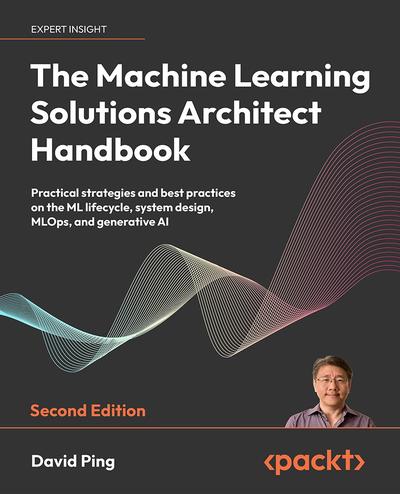English | 2024 | ISBN: 978-1805122500 | 602 Pages | PDF, EPUB | 45 MB
Design, build, and secure scalable machine learning (ML) systems to solve real-world business problems with Python and AWS
Key Features
- Solve large-scale ML challenges in the cloud with several open-source and AWS tools and frameworks
- Apply risk management techniques in the ML life cycle and learn architecture patterns for solutions
- Understand the challenges and risks of implementing generative AI
David Ping, Head of GenAI and ML Solution Architecture for global industries at AWS, provides expert insights and practical examples to help you become a proficient ML solutions architect, linking technical architecture to business-related skills.
You’ll learn about ML algorithms, cloud infrastructure, system design, MLOps , and how to apply ML to solve real-world business problems. David explains the generative AI project lifecycle and examines Retrieval Augmented Generation (RAG), an effective architecture pattern for generative AI applications. You’ll also learn about open-source technologies, such as Kubernetes/Kubeflow, for building a data science environment and ML pipelines before building an enterprise ML architecture using AWS. As well as ML risk management and the different stages of AI/ML adoption, the biggest new addition to the handbook is the deep exploration of generative AI.
By the end of this book , you’ll have gained a comprehensive understanding of AI/ML across all key aspects, including business use cases, data science, real-world solution architecture, risk management, and governance. You’ll possess the skills to design and construct ML solutions that effectively cater to common use cases and follow established ML architecture patterns, enabling you to excel as a true professional in the field.
What you will learn
- Apply ML methodologies to solve business problems across industries
- Design a practical enterprise ML platform architecture
- Gain an understanding of AI risk management frameworks and techniques
- Build an end-to-end data management architecture using AWS
- Train large-scale ML models and optimize model inference latency
- Create a business application using artificial intelligence services and custom models
- Dive into generative AI with use cases, architecture patterns, and RAG
Resolve the captcha to access the links!
